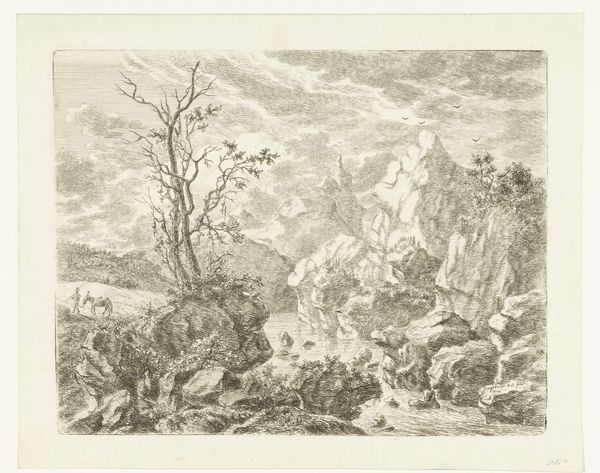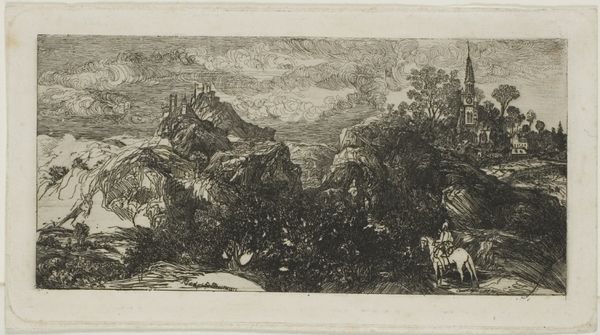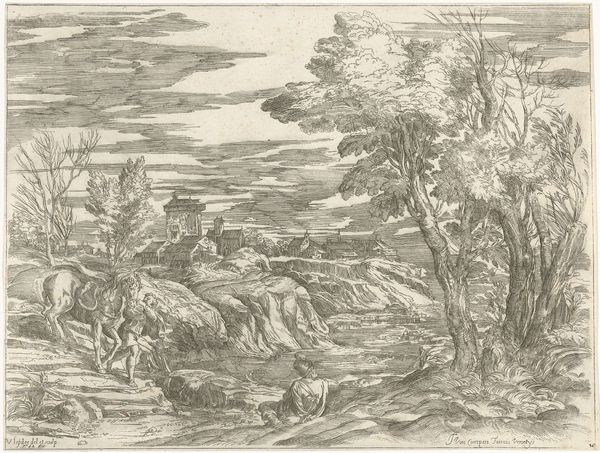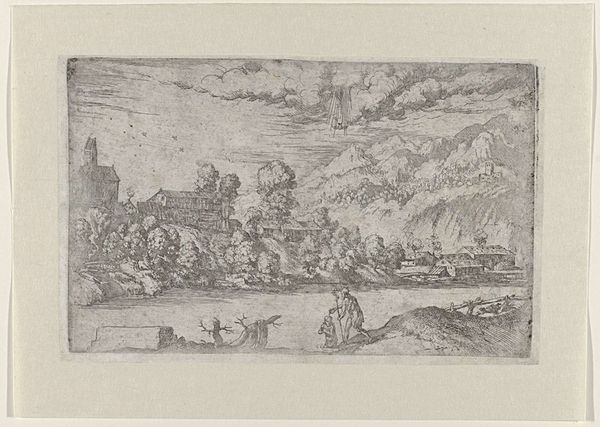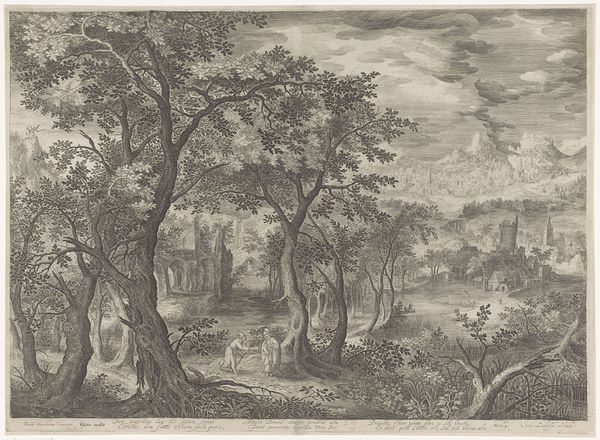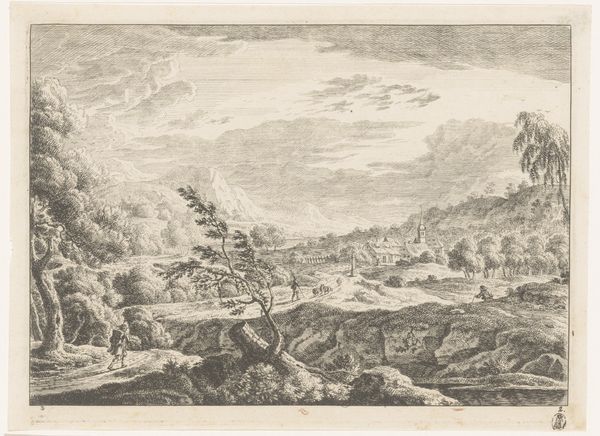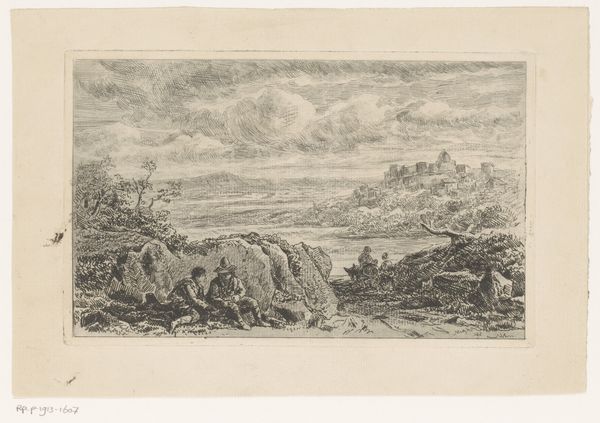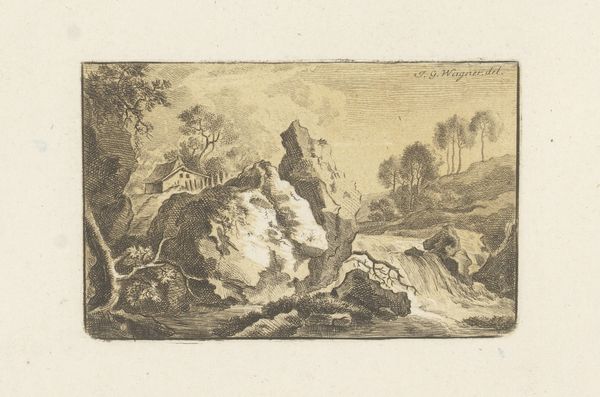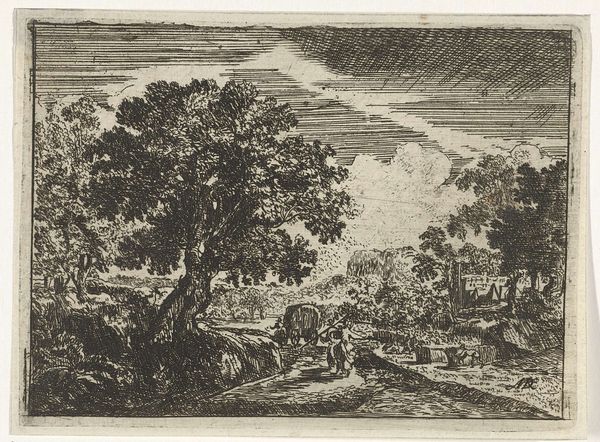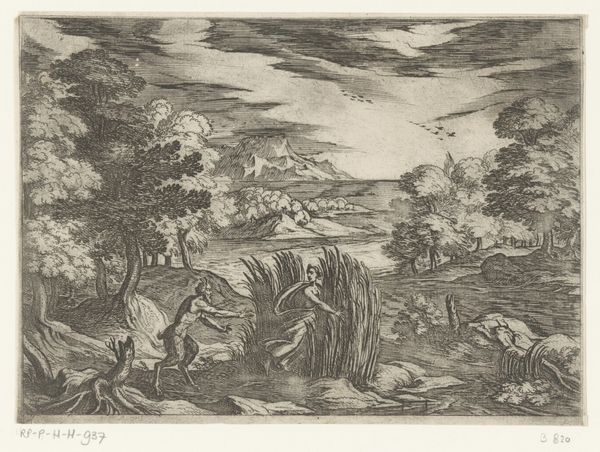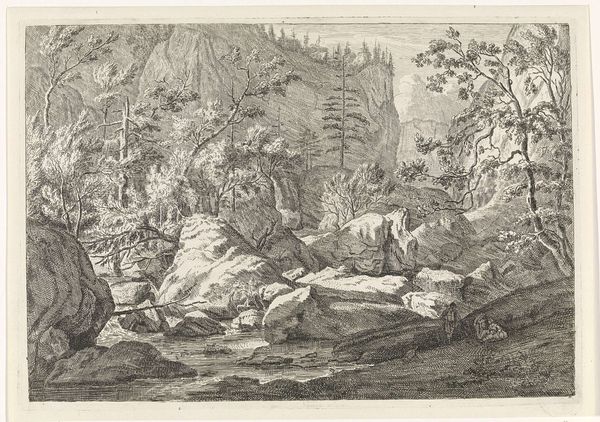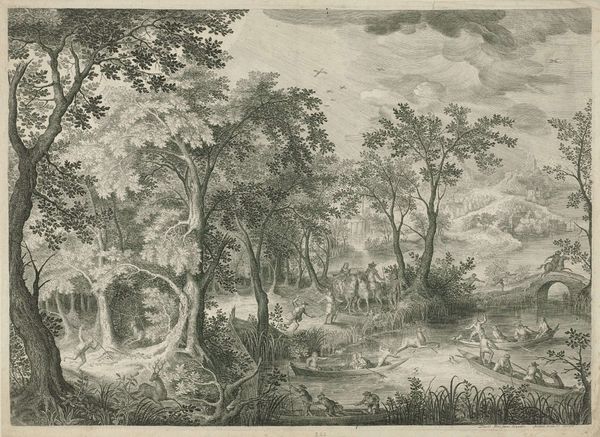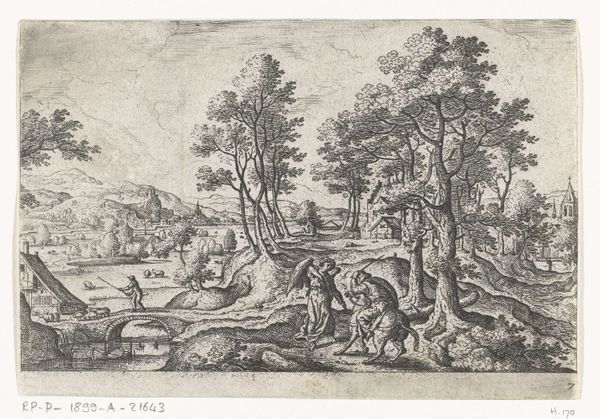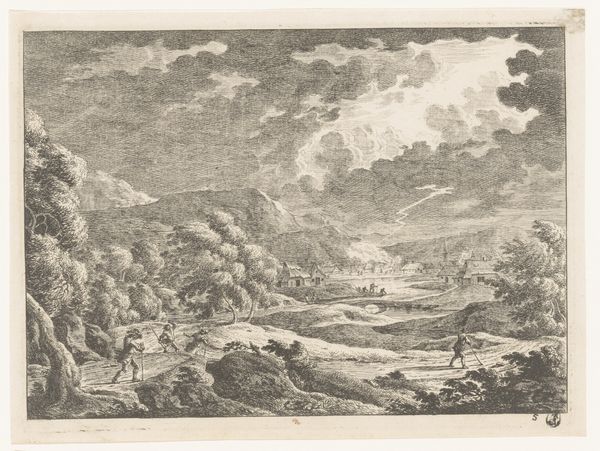
Dimensions: height 180 mm, width 250 mm, height 292 mm, width 329 mm
Copyright: Rijks Museum: Open Domain
Rodolphe Bresdin created this landscape with etching. The symbolic motifs within—the rider, the castle, and the subtle presence of death—invite a deeper contemplation. The rider on horseback, a potent emblem of control, command, and domination, echoes through centuries of art, from classical equestrian statues to Renaissance portraits. Here, the inclusion of death transforms this triumphant symbol into a memento mori. The grim reaper and the horse remind us that death is always beside us on our journey. Consider the castle perched precariously on the crags, reminiscent of ancient fortresses and citadels. It symbolizes both security and isolation, hinting at the precariousness of human endeavor against the backdrop of nature's indifference. Note how these themes resonate through time, echoing in the works of Romantic painters like Caspar David Friedrich. These motifs tap into our collective unconscious, where fear, aspiration, and the relentless passage of time converge, engaging viewers on a primal level. The symbols of death and power do not have a linear progression. They resurface, evolve, and take on new meanings across epochs.
Comments
No comments
Be the first to comment and join the conversation on the ultimate creative platform.
